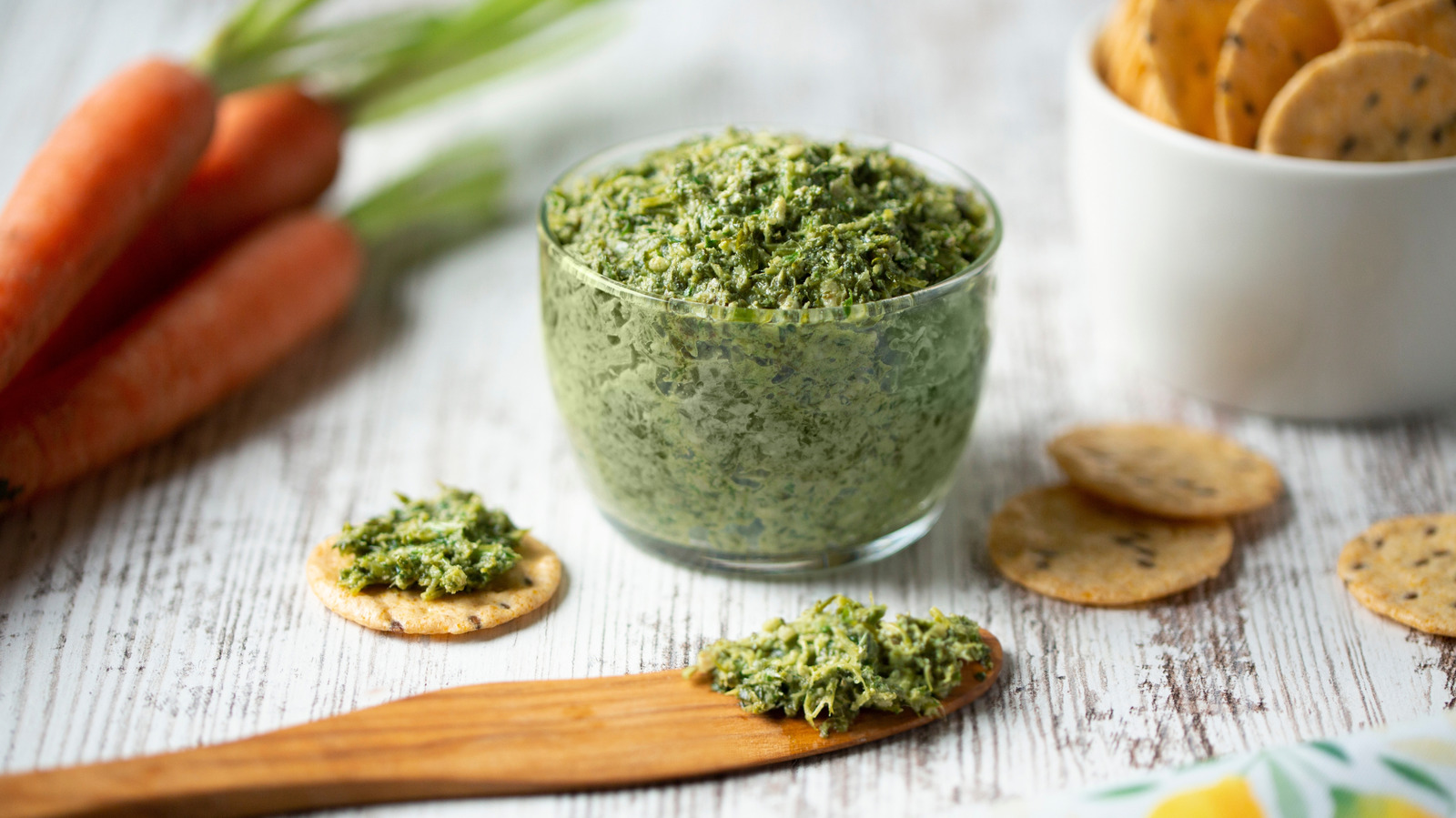
NEW YORK — It's a practice that's about as American as apple pie — accusing immigrant and minority communities of engaging in bizarre or disgusting behaviors when it comes to what and how they eat and drink, a kind of shorthand for saying they don't belong. The latest iteration came at Tuesday's presidential debate, when former President Donald Trump spotlighted a false online tempest around the Haitian immigrant community of Springfield, Ohio. He repeated the groundless claim previously spread by his running mate, JD Vance, that the immigrants were stealing dogs and cats, the precious pets of their American neighbors, and eating them.
The furor got enough attention that officials had to step in to refute it, saying there was no credible evidence of any such thing. Such food-based accusations are not new. Tito Thepkaysone cooks up some pad Thai on Dec.

20, 2023, at "Love & Thai" restaurant in Fresno, Calif. The restaurant was wrongfully accused of abusing a dog to turn it into meat, a false claim rooted in a racist stereotype. Food-related scorn and insults were hurled at immigrant Chinese communities on the West Coast in the late 1800s as they started coming to the U.
S. in larger numbers, and in later decades spread to other Asian and Pacific Islander communities like Thai or Vietnamese. As recently as last year, a Thai restaurant in California was hit with the stereotype, which caused such an outpouring of undeserved vitriol that the owner had to close and move to another location.
Behind it is the idea that "you're engaging in something that is not just a matter of taste, but a violation of what it is to be human," says Paul Freedman, a professor of history at Yale University. By tarring Chinese immigrants as those who would eat things Americans would refuse to, it made them the "other." Laura Loomer, a supporter of Republican nominee and former president Donald Trump, faces backlash for her comments about Democratic Vice President and presidential nominee Kamala Harris.
Other communities were criticized for the perceived strangeness of what they were cooking when they were new arrivals, such as Italians using too much garlic or Indians too much curry powder. Minority groups with a longer presence in the country still face racist stereotypes — think derogatory references to Mexicans and beans or insulting African Americans with remarks about fried chicken and watermelon. "There's a slur for almost every ethnicity based on some kind of food that they eat," says Amy Bentley, professor of nutrition and food studies at New York University.
"And so that's a very good way of disparaging people." That's because food isn't just sustenance. Embedded in human eating habits are some of the very building blocks of culture — things that make different peoples distinct and can be commandeered as fodder for ethnic hatred or political polemics.
"We need it to survive, but it's also highly ritualized and highly symbolic. So the birthday cake, the anniversary, the things are commemorated and celebrated with food and drink," Bentley says. "It's just so highly integrated in all parts of our lives.
" Because "there's specific variations of how humans do those rituals, how they eat, how they have shaped their cuisines, how they eat their food," she adds, "It can be as a theme of commonality ...
or it can be a form of distinct division." Crispy Pork Belly is presented Dec. 20, 2023, at "Love & Thai" restaurant in Fresno, Calif.
Insults can come from the how as well — eating with hands or chopsticks instead of forks and knives, for example. It can be seen in class-based bias against poorer people who didn't have the same access to elaborate table settings or couldn't afford to eat the same way the rich did — and used different, perhaps unfamiliar ingredients out of necessity. During the Second Gulf War, for example, Americans angry at France's opposition to the U.
S. invasion of Iraq started calling french fries "freedom fries." A much-used insulting term in the U.
S. for Germans during the world wars was "krauts" — a slam on a culture where sauerkraut was a traditional food. "Just what was wrong with the way urban immigrants ate?" Donna R.
Gabaccia wrote in her 1998 book, "We Are What We Eat: Ethnic Food and the Making of Americans." In reviewing attitudes of the early 20th century and its demands for "100% Americanism," she noted that "sauerkraut became 'victory cabbage'" and one account complained of an Italian family "still eating spaghetti, not yet assimilated." Karine Jean-Pierre on eating pets claim Such stereotypes persisted despite the fact that the American palate significantly expanded in recent decades, thanks in part to the influx of those immigrant communities, with grocery stores carrying a wealth of ingredients that would baffle previous generations.
The rise of restaurant culture also introduced many diners to authentic examples of cuisines. After all, Bentley says, "when immigrants migrate to a different country, they bring their foodways with them and maintain them as they can. .
.. It's so reminiscent of family, community, home.
They're just really material, multisensory manifestations of who we are." Haitian food is just one example of that. Communities like those found in New York City and south Florida added to the culinary landscape, using ingredients like goat, plantains and cassava.
A car drives down Fountain Avenue on Wednesday in Springfield, Ohio. So when Trump said immigrants in Springfield — whom he called "the people that came in" — were eating dogs and cats and "the pets of the people that live there," the echoes of his remarks played into not just food but culture itself. The persistence of food stereotypes — and outright insults, whether based in fact or completely made up — shows that just because Americans eat more broadly, it doesn't mean that carries over into tolerance or nuance about other groups.
"It's a fallacy to think that," Freedman says. "It's like the tourism fallacy that travel makes us more understanding of diversity. The best example right now is Mexican food.
Lots and lots of people like Mexican food AND think that immigration needs to be stopped. There's no link between enjoyment of a foreigner's cuisine and that openness." Similar to fashion trends and cultural entertainment, like film cameras or pedal pushers, food trends can also ebb and flow depending on Americans' ever-changing tastes, interests, and technological advancements only to fall out of favor.
Cottage cheese was once a popular snack food in America (in the 1970s, the average American ate nearly 5 pounds of cottage cheese according to the U.S. Department of Agriculture ).
Consumption declined in the 1980s due to the popularity of yogurt—only to slowly make a resurgence when Americans realized this high-protein food is incredibly versatile thanks to TikTok and Instagram social media influencers. Did you know you can use cottage cheese to make ice cream? Now, viral cottage cheese recipe hacks are shared widely across platforms. While there are foods that have a resurgence in popular culture, other foods that were once popular on tables across America have either dimmed in popularity or disappeared completely.
As culinary tastes evolved towards simpler, more natural flavors, health consciousness grew, leading to a preference for less processed foods. Changes in grocery store offerings, preferences, restaurant cultural shifts (why visit a soda parlor when you have a McDonald's?), availability of ingredients, and even migrant bird laws (yes, you read that right) have all played a role in these particular foods losing popularity amongst Americans—reflecting broader societal changes in how and what we eat. Stacker researched the history of popular foods, from Jell-O salads to Salisbury steak, and highlighted 15 that are no longer widely consumed, citing sources like the Smithsonian and various publication archives.
Here are the popular foods we typically don't see Americans enjoy anymore, from the restaurants they dine at to the dishes they share at the table. You may also like: 10 different foods used in New Year's Eve traditions and the stories behind them A pie made of robins? Yeah, that's not something we see on American tables anymore. Especially after robins were protected under the Migratory Bird Treaty Act of 1918.
But, before that, this particular pie was a dinner specialty in the 19th century; pie crust layered with beef, fat bacon, and robin. Although the olive loaf is similar to Italian mortadella, sliced sausage meat with cubes of pork fat, this former American favorite deli meat is a mixture of pork, chicken, and beef with whole green olives. In recent years, the olive loaf has been associated with more popular cuts like bologna and is not typical to find on mainstream grocery store shelves.
Originally a staple in Northern European countries given how easy it was to store and transport fish without it going bad, pickled herring became a staple in America due to European migrants who settled in the Midwest and brought their love for this preserved fish. However, with the availability of fresh fish in grocery stores and the popularity of other preserved fish products, like canned tuna, or more recently tinned sardines, pickled herring isn't a popular choice a century later. Dating back to the ancient Greeks, ambrosia salad began appearing in cookbooks in the 1800s when citrus fruit was easier to get ahold of, and soon became an American staple across dinner tables nationwide.
This sweet creamy salad can include canned pineapple, canned mandarin oranges as well as fresh oranges, miniature marshmallows, and coconut. The dish became a staple across Southern states in the 20th century but isn't seen as much on dinner tables during the 21st. Also referred to as jello salads or gelatin salads, this dinner staple was a traditional side on American tables; a gelatin mold with a mix of savory and sweet ingredients like fruit, grated carrots and other vegetables, cottage and cream cheese, marshmallows and crunchy fillings like pretzels and nuts.
After Jell-O was invented in the late 1800s, making it easy to create gelatin-based foods, the first jello mold popped up in Pennsylvania in 1904 by Mrs. John E. Cook.
The jello salad became popular in the 1950s but declined in popularity in the 1960s and 70s. You may also like: What does the best coffee from 10 regions around the world taste like? Once a popular dish dating back to the 17th century, succotash isn't the type of dinner side you see on the table these days. Evolved from the word msíckquatash from the Narragansett tribe, meaning "boiled corn kernels," this dish will typically contain a variety of ingredients including onions, tomatoes, lima beans or other legumes, bell peppers, turnips, and sometimes cubed meat like corned beef or pork.
Although this New England staple might not be seen on many tables these days, it can still be a popular fixture in some Southern households. Although the Salisbury steak became a popular dinner choice and was frequently found in TV dinners, this particular dish was originally presented as a cure for digestive illness for troops during the Civil War. Dr.
James Henry Salisbury founded the dish, an early pioneer of germ theory, and claimed that a diet high in beefsteak and coffee could help cure digestive diseases. (The claim was that beef was easier to digest compared to root vegetables.) It became a common dish served to troops in World War I and became a staple on American tables for decades.
This dish is made from ground beef patties smothered in a gravy sauce. Speaking of the Salisbury steak, the once popular TV dinner also isn't a regular purchase for grocery shoppers anymore. Slightly different from the frozen dinner selection at stores today, TV dinners increased in popularity when television sets became a staple in U.
S. households in the late 1950s. Simply pop the dinner in the oven for less than 20 minutes, and you have a fully cooked, ready-to-eat meal with a main (like meat in a gravy sauce), side dishes (peas, carrots, corn, or anything similar), and sometimes even a dessert.
(Chocolate cake!) With the decline in interest in ice cream parlors and soda fountains, there was also a decline in the once-popular malted milkshake. After the Horlick brothers created malted milk powder in the 1870s, malted milk was relied on regularly as a food during the Great Depression; a dried tablet made with dry malt extract, wheat extract, and dried milk that was mixed with water. Malt was eventually used as an ingredient in soda fountains, as a means to lure customers away from drinking alcohol in saloons.
However, malted milk options are not regularly seen on abundant grocery shelves anymore. Originally founded in Switzerland in 1904 and then sold in the U.S.
market as early as 1915, Ovaltine is a chocolate powder made from whey, malt, cocoa, and sugar (corn syrup) that can be prepared in hot or cold milk. It became a household staple not only for the taste, but also for its nutritional benefits; Ovaltine contains 12 vitamins and minerals, and 40% of the recommended daily intake of calcium (when mixed with eight ounces of milk). The drink was acquired by Nestle in 2007 and isn't as popular in American pantries as it once was.
You may also like: A brief look at Black American history told through 10 food traditions The fruitcake dates back as early as ancient Roman times, a sweet energy bar made with barley, honey, pomegranate seeds, wine, and dried fruit. Versions of this delicacy spanned different countries and cultures and are most ubiquitous as a sweet treat to celebrate the holidays. It's even the chosen cake served at royal weddings! Despite this, tastes changed, and the home-baked allure and popularity of fruitcakes fell with dry mass-produced cakes.
Named for the company where they came from, Necco wafers are small colorful sugar-coated candy discs that were made by the New England Confectionery Company. In 1847, Oliver R. Chase created a machine that pressed and printed candy which helped him to become one of the founding owners of Necco.
The wafer was so popular that the U.S. government bought an entire year's (production) worth of the candy to pack away for soldiers fighting in World War I.
With so many candy options on shelves these days, the Necco wafer is a candy that has been long forgotten, but still beloved by many who used to love snacking on this sugary sweet treat. The space-age drink! Tang debuted in 1957 as a vitamin C-rich breakfast drink by General Foods, but is even more popularly known as the chosen drink for '60s astronauts, including John Glenn and his journey around Earth in 1962, and NASA's Gemini mission in 1966. Other orange drinks popped up in the market including SunnyD and Tampico.
While a popular choice at the time, Tang isn't an everyday beverage typically enjoyed by Americans, even though the product comes in different flavors and is still available to buy in stores. After the popularity of jarred cheeses like Cheez Whiz, Nabisco released a "cheese in a can" originally called Snack Mate in 1965, then renamed Easy Cheese in 1984. Served in a can like whipped cream, customers pop open the top and spray cheese on a cracker, on top of sandwiches, or anything else that warrants a drizzle of cheese on top.
The popularity of the cheese resulted in a variety of flavors on the market including pimiento, French onion, cheddar blue cheese, shrimp cocktail, nacho, pizza, sharp cheddar, and cheddar 'n bacon. However, many flavors were discontinued as popularity declined. During its heyday in the early 20th century, thousands of soda fountains were sprinkled across the nation, a place to grab a sweet soda beverage with scoops of ice cream and clever homemade syrups.
The ice cream soda was originally founded by Robert M. Green in 1874, who sold fountain soda with scoops of ice cream when he ran out of sweet cream. His clever substitute became a nationwide staple for decades until the popularity of ice cream sodas began to fade thanks to the introduction of fast-food soda fountains in the 1970s.
Story editing by Cynthia Rebolledo. Copy editing by Robert Wickwire. Photo selection by Ania Antecka.
You may also like: Community fridges don't just fight hunger. They're also a climate solution. With our weekly newsletter packed with the latest in everything food.
.














